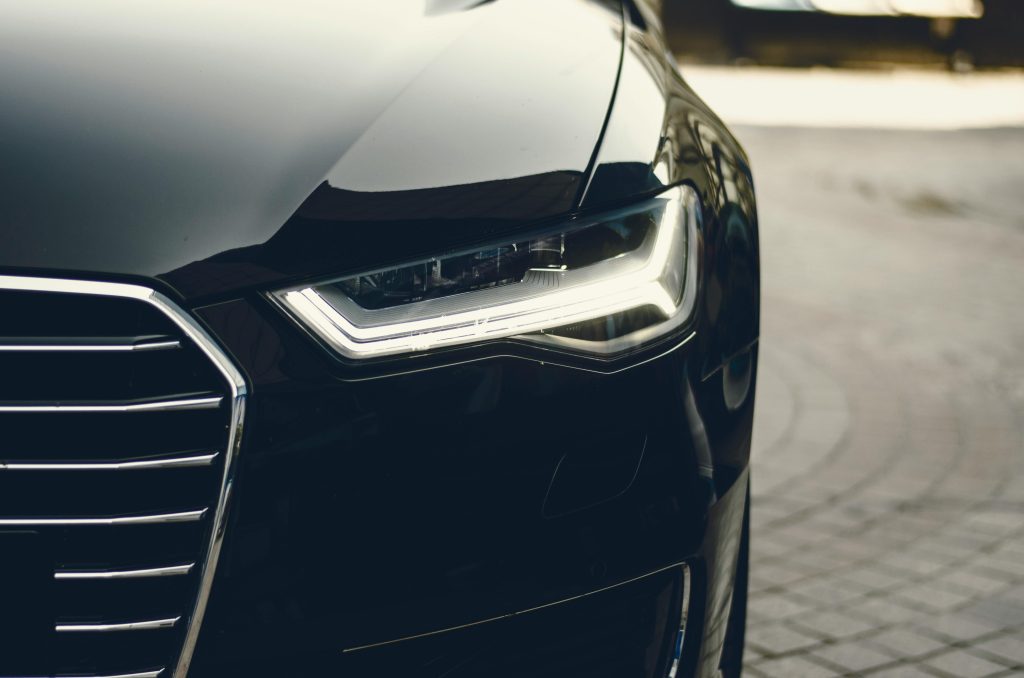
You’ve probably seen those viral videos where someone scrubs foggy, yellowed headlights with toothpaste, baking soda, or even cola, and magically restores their shine. But before you spend your Saturday afternoon raiding your pantry and rubbing household products all over your car, let’s take a look at how those DIY methods stack up against the professional detailing services offered at VitroPlus.
Why do headlights get cloudy or yellow in the first place?
Over time, UV exposure causes the outer plastic layer of your headlights to oxidize, turn yellow, and weaken. Dirt, dust, and road grime speed up the wear by gradually breaking down the original protective coating. And in places like Quebec, harsh winters and road salt only make things worse.
Once the surface becomes porous, tiny cracks can form, letting in moisture and causing that hazy, fogged-up look from the inside.
Not only does this affect how your car looks—it’s also a safety issue. Dull headlights can lose up to 50% of their brightness, making night driving or navigating in poor visibility much more dangerous. In some cases, badly worn headlights could even cause your vehicle to fail a mandatory inspection.
Can you restore foggy headlights on your own?
There are plenty of DIY tricks and store-bought headlight restoration kits that can help bring back some clarity to your headlights, but they come with their own pros and cons.
Pro: It’s cheap.
No doubt, the biggest draw of DIY solutions is the cost. A tube of toothpaste or box of baking soda costs just a few bucks. Even store-bought restoration kits usually fall between $20 and $75.
Pro: It’s convenient.
You can do the job yourself whenever you like, right in your driveway or garage. If you’re handy and follow the instructions carefully, a full restoration—sanding, polishing, and sealing—can take just an afternoon.
Con: It’s only a short-term fix.
Toothpaste and baking soda can remove surface gunk, but they don’t tackle deep oxidation. Even store kits that include sanding and polishing rarely provide a long-lasting UV-resistant sealant like the ones used in professional settings. So, be ready to repeat the process in a few weeks or months.
Con: Results may vary.
It really depends on the method, the extent of the wear, and your experience. Unless you’ve got the right abrasives and multi-stage polishing compounds used in auto detailing shops, you may end up with a cloudy or uneven finish.
Con: You could do more harm than good.
Once you start sanding plastic, there’s no going back. Apply too much pressure or use the wrong grit in the wrong order, and you could leave permanent scratches, making your headlights worse instead of better.
Why professional headlight restoration is worth it
At VitroPlus, our team uses commercial-grade abrasives, polishes headlights in stages, and finishes the job with a UV-resistant sealant that helps protect against future damage. Here’s why our headlight restoration service stands out:
Pro: Exceptional results.
Because we go deeper than just surface cleaning, we can bring your headlights back to nearly new condition. Our pros use advanced wet sanding and machine polishing techniques, with specially formulated compounds that remove haze without leaving micro-scratches. It takes real skill and a trained eye to achieve a smooth, even finish.
Pro: Long-lasting clarity.
To keep your headlights looking great, we apply a protective UV-resistant coating that helps prevent future oxidation. That means your next restoration could be years away, not just months.
Pro: Quick turnaround.
Thanks to streamlined workstations and efficient techniques, we can restore most headlights in just 30 minutes. Drop off your vehicle in the morning and pick it up later the same day—good as new.
Con: Slightly higher cost.
Yes, professional work costs more—expect anywhere from $80 to $200, depending on your vehicle and how bad the damage is. But the results last much longer, and if you’re planning to keep your car for a while, it could actually save you money over time.
Con: You’ll need to book an appointment.
This is probably the only real inconvenience—you’ll need to call your local VitroPlus or book online. Still, it only takes a few minutes, and you’ll enjoy safer, clearer driving for years to come.
So… which route should you take?
It really depends on your budget, how much time you want to spend, and what kind of results you expect. If you’re not sure whether to DIY or go pro, here are a few questions to help you decide:
How bad is the damage?
Slight yellowing or light cloudiness? DIY might be enough. But if your headlights are deeply oxidized, a professional job will give you far better results.
How often do you want to redo it?
DIY methods usually need to be repeated every few months. Want a more permanent fix? Go with the pros.
Do you own an orbital sander/polisher—and know how to use it?
The most effective kits work best with one of these tools, but if you’re not confident in your technique, you could end up damaging your lights.
Are you planning to sell your car soon?
Professional detailing—headlights included—can boost your vehicle’s curb appeal and resale value. Clean, clear headlights show that the car’s been well cared for.
